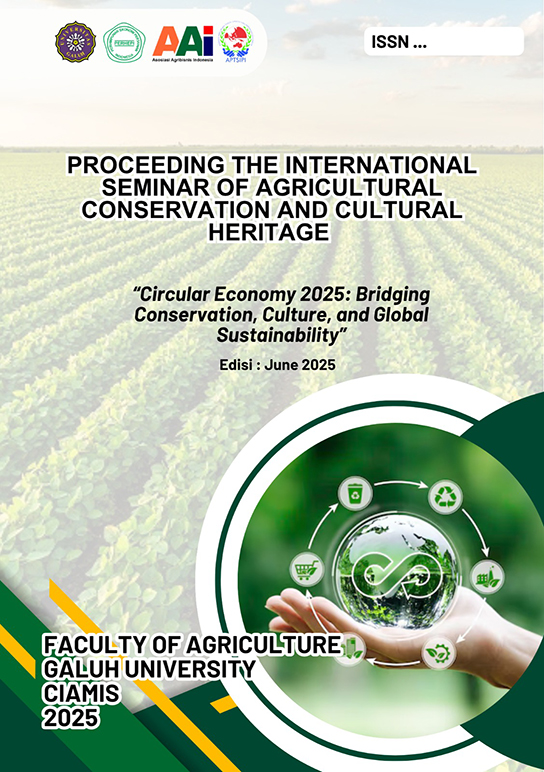IDENTIFYING COFFEE NURSERY RISKS WITH GENERATIVE PROPAGATION TECHNIQUES
Keywords:
Risk; Coffee Nursery; Generative PropagationAbstract
Seedling is an important early phase in the coffee cultivation process, where the success of the nursery greatly determines the productivity of the coffee plant. High-quality seedlings are produced through optimal and minimal risk seeding stages. This study aims to identify various risks that arise at each stage of coffee breeding with generative propagation techniques. Identification is carried out starting from the seed seeding stage, planting in polybags, maintenance, to harvesting. Data was obtained through a questionnaire containing 39 risk statements, with an assessment of two aspects, namely possibility and impact. The method used in this study is quantitative descriptive by calculating the final risk score. The results of the study show that there is a high risk at the seeding stage, which includes poor quality coffee beans resulting in seeds being difficult to germinate in the seed seeding phase, seedlings attacked by pests and diseases in the planting phase in polybags, as well as extreme weather and excessive weed growth in the maintenance phase. With such conditions, it is hoped that the company can improve quality control, pest and disease prevention, as well as extreme weather and weed mitigation. In addition, this research can be a foundation for coffee nursery business actors to implement good risk management, so that the seeds produced have good quality.
References
R. Nabilah, C. Ananda, R. M. Sari, E. Ratnasari, and V. V, Pros. SEMNAS BIO 2021 1094 (2021)
2. I. Setiyawati, Neliyati, and Jasminarni, J. Agroecotania 7, 1 (2022)
3. M. Zasari, Kartika, and Ropalia, J. Din. Pengabdi. 8, 283 (2023)
4. K. E. Pramesti and P. Pardian, Mimb. Agribisnis J. Pemikir. Masy. Ilm. Berwawasan Agribisnis 8, 558 (2022)
5. J. O. Yoewono and A. H. Prasetyo, J. Muara Ilmu Ekon. Dan Bisnis 6, 56 (2022)
6. P. G. Subhaktiyasa, J. Ilm. Profesi Pendidik. 9, 2721 (2024)
7. M. E. Albar, L. Parinduri, and S. R. Sibuea, Bul. Utama Tek. 17, 241 (2022)
8. A. D. Nugroho, D. L. Putri, and A. A. C. Sudarni, J. INOVTEK POLBENG 13, 127 (2023)
9. I. G. A. A. Istri Lestari, K. Kurniari, and K. K. Darmaputra, J. Ilm. Kurva Tek. 12, 29 (2023)
10. D. S. Haryani, Risnawati, N. K. Santoso, and S. Kurnia, Int. Conf. Gov. Educ. Manag. Tour. 476 (2021)
11. R. Sasmito, H. A. Karim, and Makmur, J. Pengabdi. Kpd. Masy. 3, 45 (2023)
12. B. Mahendra, Perwira J. Sci. Enginering 1, 1 (2021)
13. R. Apriantonedi, E. Fransiko, R. Fernandez, J. Agroteknologi, F. Pertanian, U. Pat, P. Studi, A. Fakultas, P. Universitas, R. Samban, A. Makmur, and B. Utara, PUCUK J. Ilmu Tanam. 3, 60 (2023)
14. Rahmanta, Onrizal, and M. Jufri, BERNAS J. Pengabdi. Kpd. Masy. 6, 122 (2025)
15. N. Z. Afifah, R. I. Septiani, and R. A. Putri, J. Ilm. Res. Student 2, (2025)


